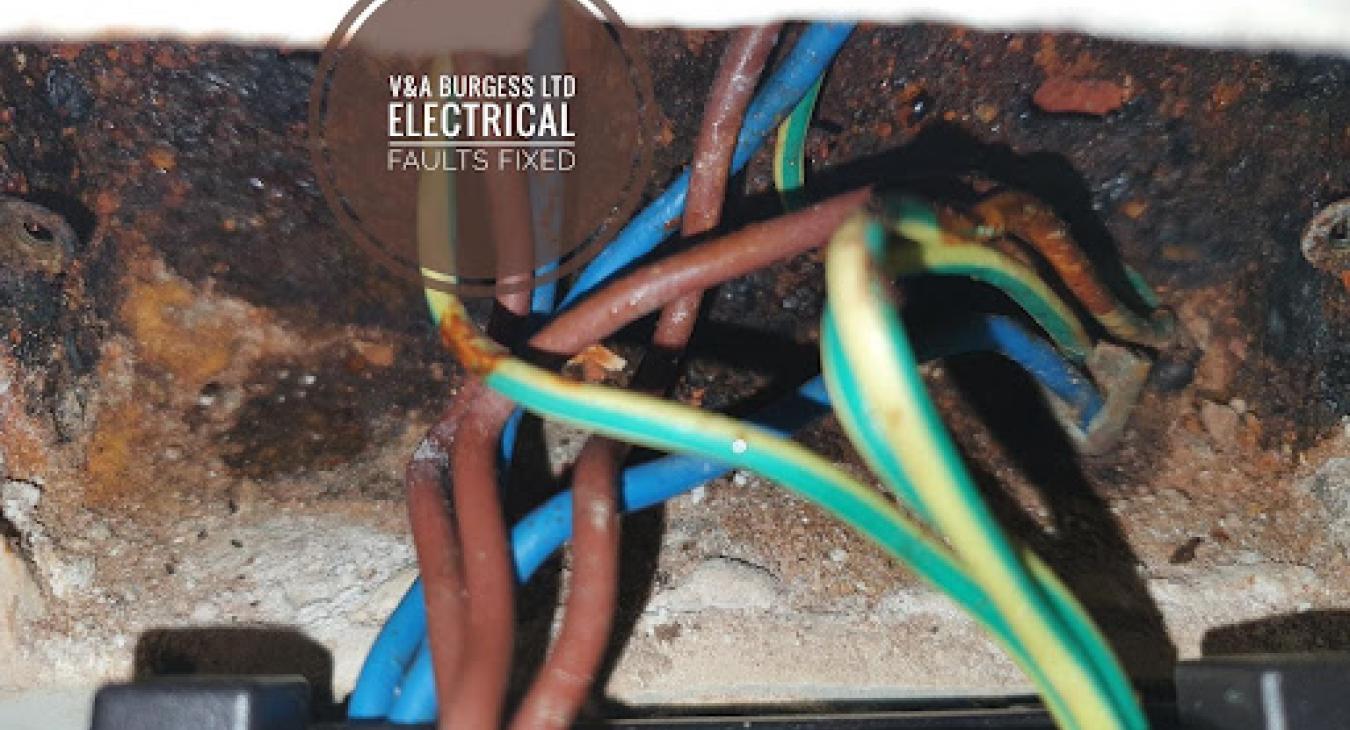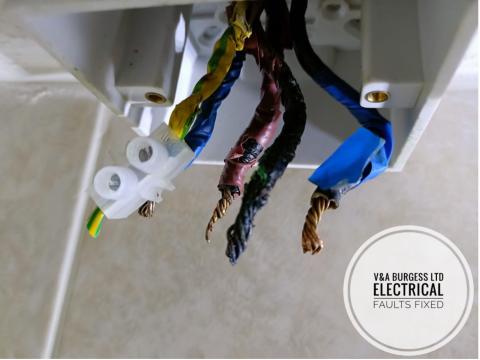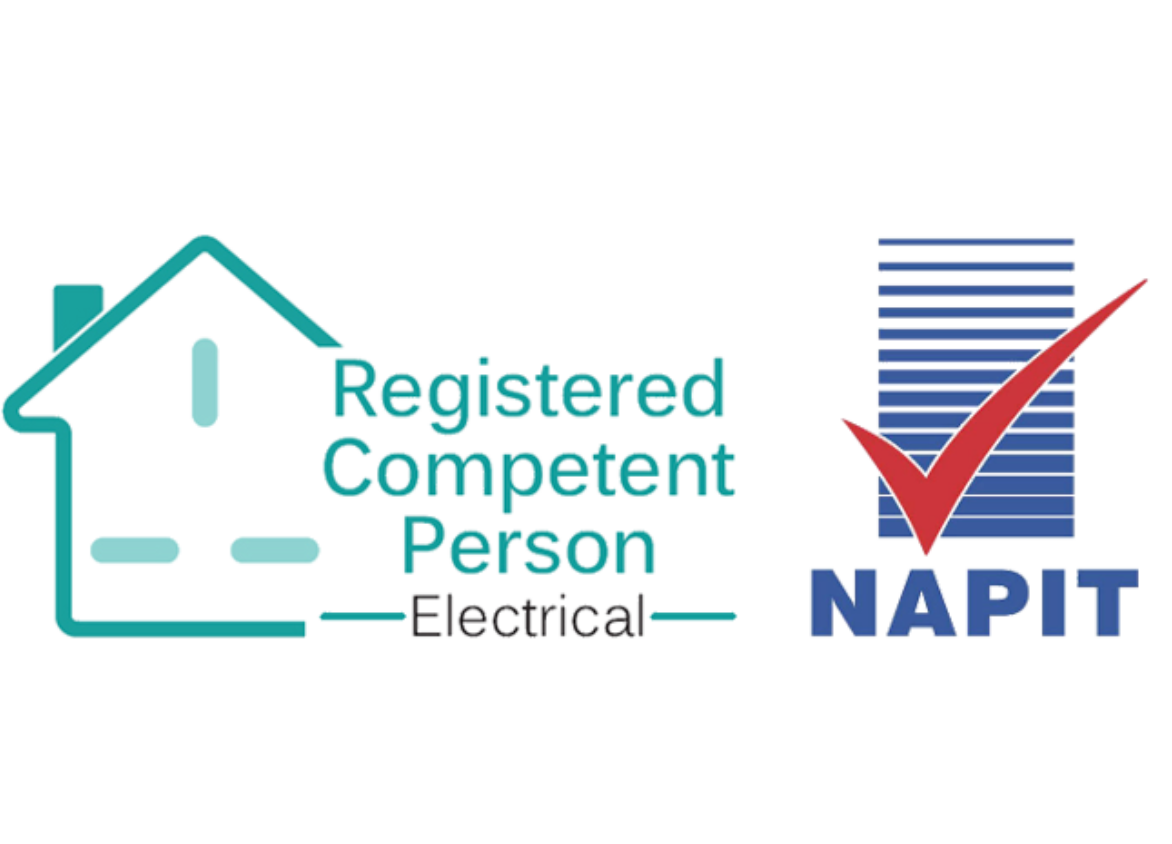
Damp in sockets is a serious issue that presents a risk to the building and the occupants and users of the electrical installation.
When moisture infiltrated the electrical system including electrical sockets and switches, it can lead to wiring problems, electrical faults such as short circuits, breakdown in cable insulation, arcing, sparking, nuisance tripping of switches in the consumer unit, electrical fires and other issues.
By understanding the causes, hazards, risks and preventions, dangerous situations can be avoided meaning a safer living environment for everyone in the building.
There can be a number of causes for damp in electrical plug sockets:
- Condensation: Hopefully there are no electrical plug sockets installed in your bathroom or shower room as this is not only potentially dangerous but also a great place for moisture to enter the electrical system through your plug sockets. Kitchens, typically, are the normal place for high levels of condensation to affect electrical plug sockets and we see issues such as rust, electrical failure and burnt out socket regularly in kitchen areas. Having your electrician install a suitably strong ventilation fan in this area can alleviate excessive condensation, opening a window or door whilst cooking and being more aware of the harm excessive water vapour can have on the electrical system will help prevent the problem of condensation entering or forming on electrical sockets.
- Moisture from outside: When our homes are not efficient at repelling water vapour, water ingress, damp and rain it can have a detrimental effect on the electrical system. As in the photograph, water can penetrate the electrical system, rust through the metal boxes that hold electrical sockets in place and can drip down cabling into the electrical terminals of the plug socket causing major safety concerns and potential fire risk. Sealing up any obvious entry points of water and ensuring your gutters are not blocked can help reduce the risk of external water from entering the building and affecting the electrical system. If you have damp in the building then consult with a qualified damp control expert to see what steps can be taken to reduce or eliminate the problem.
- Leaky plumbing: Internal water sources can also interact with the electrical system and wreak havoc. Faulty plumbing such as leaking pipes, wastes and taps can allow water to make its way through the fabric of the building and regularly the only channel water has for escape is down the premade channels for electrical wiring. When we are called to emergency leaks to make the electrical system safe, we often see water leaking from light switches and sockets as a pre made channel has been left in the building after wiring has been completed and the water finds its way in. Gradual leaks in the plumbing system can go unchecked or unnoticed for a long time and can cause deterioration in the electrical wiring and other components if the leak is not found in good time.
- Outdoor Sockets: Poorly fitted or aging outdoor electrical plug sockets can allow moisture to enter them or into the building through the wiring channels or holes. It is worth checking to see if any water sealing has failed around your outdoor sockets as this may be the reason for damp in internal sockets or outdoor sockets. Consult your electrician if you find that you have water ingress through electrical sockets or fittings.
Where is the danger with a bit of water in a socket though?
- Electrical Risks: When damp, moisture, water vapour or water is present in electrical sockets there is a real risk of short circuit (Fault of very high electrical current), risk of breakdown of cable insulation (allowing current to leak away), risk of electrical shock, potential sparking and arcing. Water (unless incredibly pure) is a conductor of electricity and can bridge live parts and parts not intended to be live meaning that water vapour on the outside of a socket can be LIVE! Electricity is a dangerous force and should be respected. Damp in sockets is a problem.
- Risk of Fire: There is an increased risk of electrical fire occurring whenever there is moisture present in an electrical circuit. Moisture can cause electricity to arc across from LIVE parts to earthed parts casing arcing. This is a very high temperature situation that can ignite materials around the area and cause a fire. Any sparking can also ignite debris or nearby materials causing a fire.
- Cable damage: Permanent cable damage can result from moisture ingress into electrical circuits. Not only can arcing and sparking damage cables by melting the insulation, oxidizing the copper making it less conductive but also the water ingress can leave behind minerals and salts when the water eventually dries out. These can be conductive and can ruin the cable insulation meaning occasionally parts of cables need to be replaced following water ingress.
- Connected Equipment: There is also a risk presented to any connected equipment in an electrical circuit that is experiencing moisture ingress, arcing, sparking and general distress. If there is water in any of your electrical circuits then you should isolate the circuits by turning them off at the consumer unit / fuse box and consulting an electrician immediately. An electrician can make sure that any circuits are correctly isolated and wiring removed temporarily to prevent damage to your consumer unit and other electrical circuits.
How would we prevent or limit damage if we suspect water ingress?
- EICR: One of the best and severely unused methods of damage limitation and prevention is the EICR. Hardly any of our domestic customers have heard of this until we bore them silly with it 😊. The EICR or Electrical Condition Inspection Report is something that should be produced by a trusted and suitably qualified electrician every ten years as a MINIMUM. That means, every ten years you need to ask an electrician to come around to your home and spend several hours testing your electrical circuits and inspecting your electrical accessories. This process and subsequent report will highlight many potential issues BEFORE they become serious, costly problems. If your electrician finds damp beginning in certain places, they will alert you to this such that you can obtain an independent damp inspection to prevent bigger problems and stop it in its tracks!
- Home Maintenance: Every effort should be made to keep on top of home maintenance, every homeowner should have a roofer, a plumber and an electrician that they can trust (other trades are also helpful). It is absolutely no good ringing around in an emergency trying to find a trustworthy, reliable tradesperson and far better to have a list of people that you already know will be able to help you in an emergency. Make sure that your gutters are kept clean, waste pipes and traps are kept clean and clear, outside drains and leaf traps are cleaned regularly along with water escape routes. Leadwork on the roof should be checked along with looking for any missing or slipped tiles on the roof.
- Ventilation: If you have kitchen or bathroom fans that are no longer working, clogged up with dust and debris or are simple inefficient then have them replaced by your electrician to make sure that they are able to expel the moisture effectively from these damper environments thus preventing a build-up of water vapour on and around electrical accessories and cabling. Open other windows even just a crack to allow more fresh air into your home and to relieve the home from water laden air.
- RCD: Residual Current Devices. Or to you and me, electric shock protection devices. These sense any tiny amount of electrical current missing from the electrical circuits such as that which occurs under wet conditions and will shut off the circuit preventing electric shocks and saving cabling and accessories from further damage.
If you suspect that you have damp in sockets then call your local emergency electrician and ask them to come and investigate for you. Do not put yourself or others at risk by ignoring the situation, these situations rarely resolve themselves and will generally get worse.










